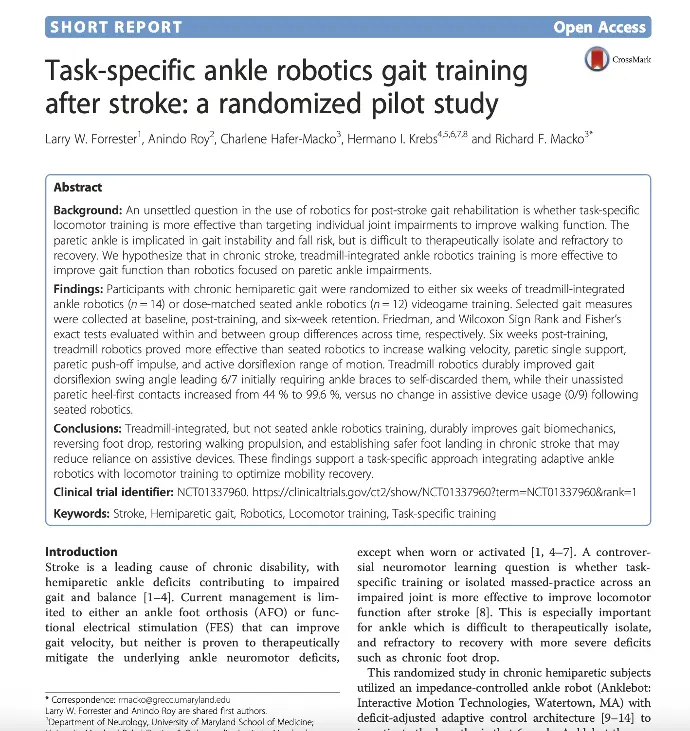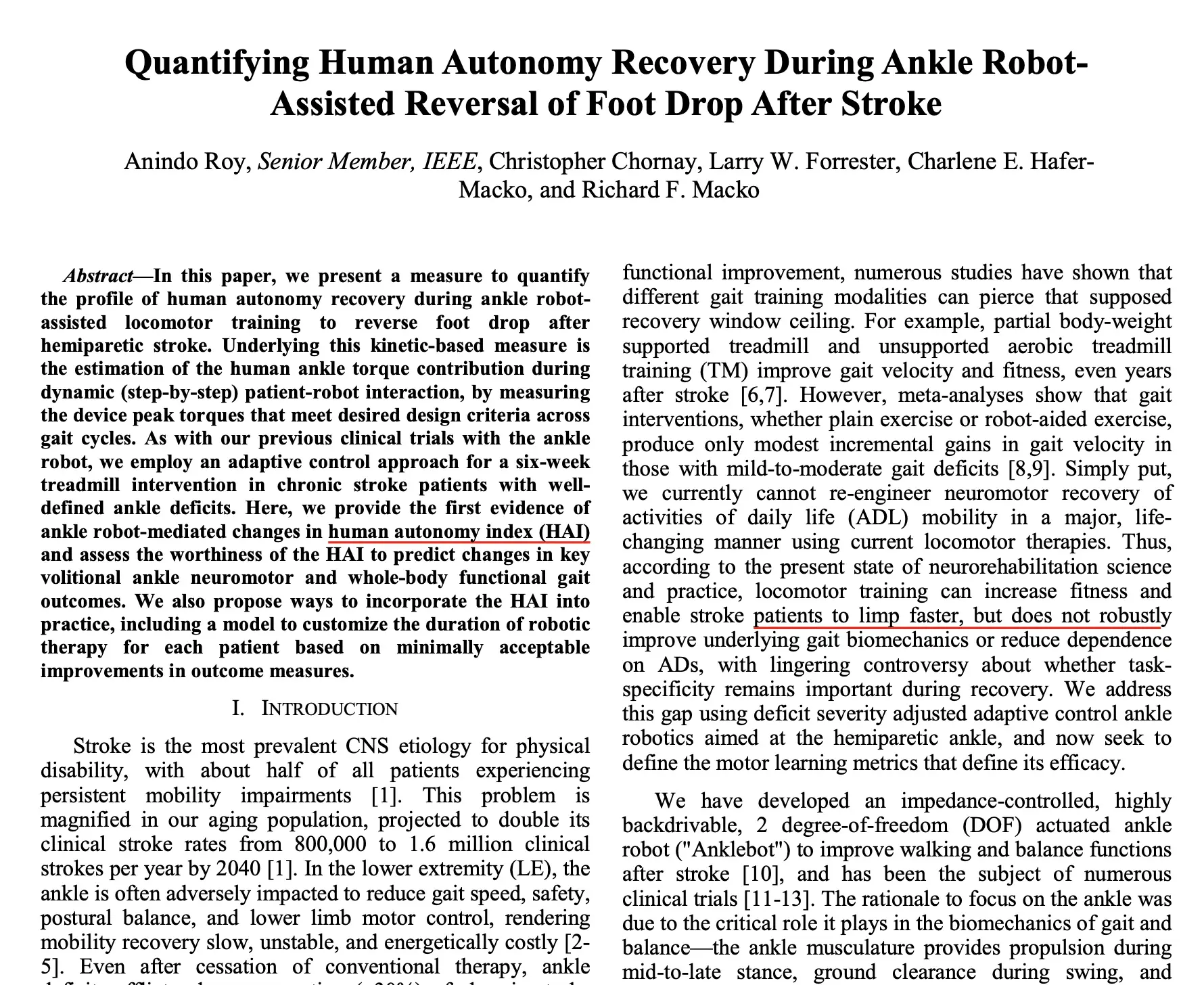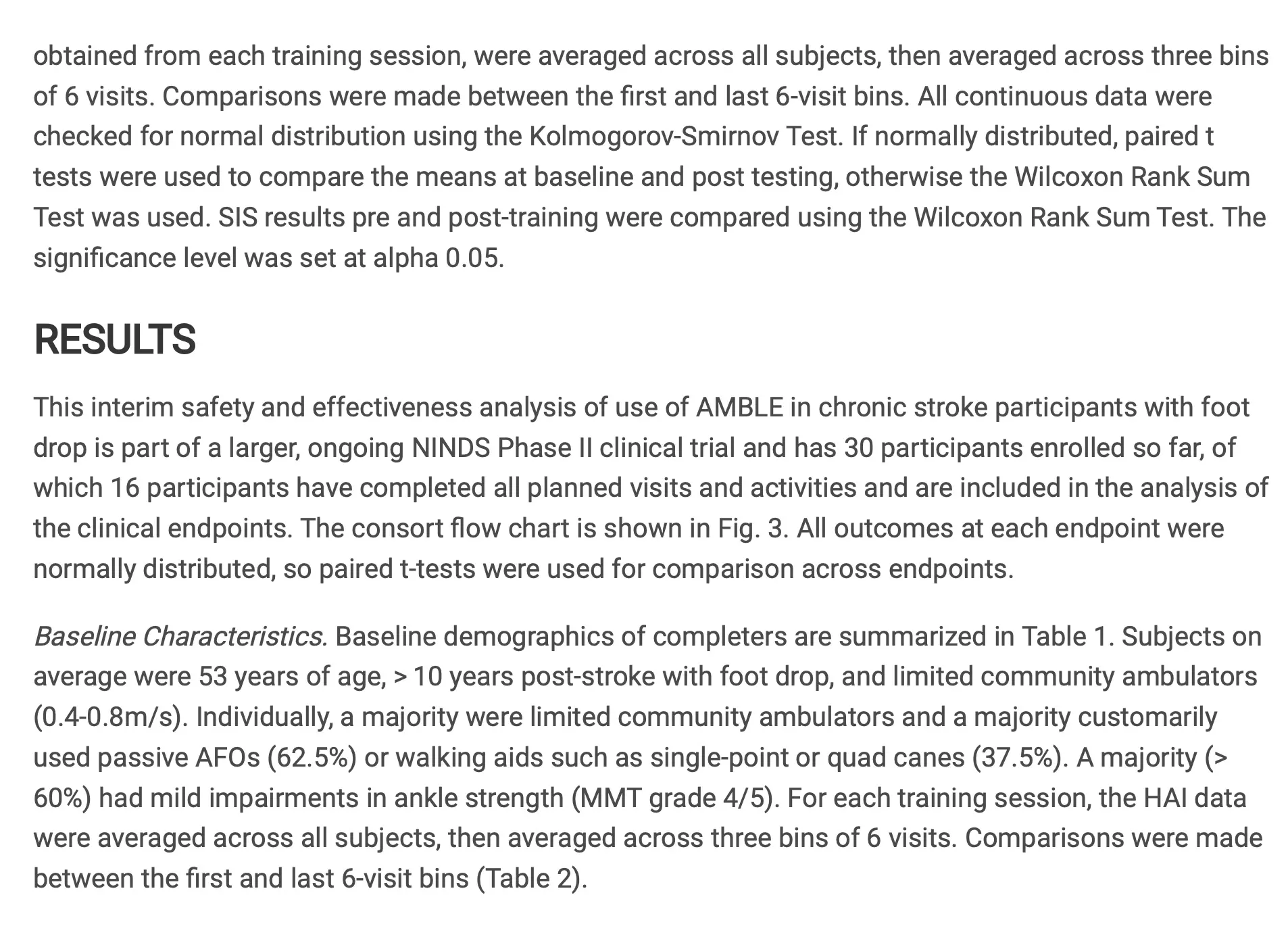NSR Research
We strive to support your professional growth and ultimately enhance the well-being of your patients by providing you with our peer-reviewed research at no cost. Thank you for your dedication to the field of physical therapy, and we are excited to continue to update this page
Ankle Training with Robotic Device Study
2011 study titled “Ankle Training with a Robotic Device Improves Hemiparetic Gait After Stroke” by Forrester, Roy, Macko, and Krebs. 6-week, 3x/week seated graded assistance ankle robot (Anklebot, AMBLE's tethered predecessor) training in 8 participants chronic post-CVA.
Results: Improved gait symmetry (improved paretic stance time) and self-selected gait speed (20% improvement) in the participants.
2013 IEEE International Conference on Robotics & Automation Study
"Anklebot Assisted Locomotor Training After Stroke: A Novel Deficit-Adjusted Control Approach"
Validated use of a novel event-triggered robotic control approach during Anklebot-assisted gait with 2 participants
Modular Ankle Robotics Training in Early Subacute Stroke Study
34 participants compared seated Anklebot training vs. passive manual stretching. Both groups improved gait speed, but the ankle robotic group had significantly greater improvements in temporal symmetry, step symmetry, and nonparetic step length
Insights from a 2016 study led to the inception of AMBLE
Study in Journal of NeuroEngineering & Rehabilitation
"Task-specific ankle robotics gait training after stroke: a randomized pilot study”
1st full gait study with use of the ankle robotic. 14 patients, chronic post CVA, comparing robotic treadmill training vs. robotic seated training over 6-week period. Reassessed 6 weeks after study.
**85% of participants self-discarding ankle braces and/or reduced assistive devices** (see article for further results)
2018 IEEE Conference Study
"Quantifying Human Autonomy Recovery During Ankle-Robot Assisted Reversal of Foot Drop After Stroke” by Roy et al. sought to develop the Human Autonomy Index (HAI) based on the findings from the 2016 study.
A new method and metric to quantify volitional ankle motor control during physical human-machine interactions e.g., robot-assisted movement therapies. AMBLE is the only device that subsumes this outcome (human autonomy index or, HAI). In AMBLE’s clinical study, subjects with CVA demonstrated increased ankle control during limb swing (HAI 7.2 to 12.1%) over 17 treatment sessions. (See article for correlations to HAI and additional results)
Journal of NeuroEngineering & Rehabilitation Study
"Dorsiflexion Specific Ankle Robotics to Enhance Motor Learning After Stroke: A Preliminary Report” by Roy et al. 16 subjects post CVA.
All subjects with chronic hemiparetic gait. Completed about 9 weeks (1/hr per week) of gait specific training with the AMBLE. Significant improvements in heel-first steps, 6MWT, and DGI.
See article for additional significant findings
Currently involved in study with our Upper Extremity Robotic
**Stay Tuned**
Current involvement in randomized clinical trial with AMBLE in subacute post-CVA population
**Preliminary data is promising. Stay tuned for published study**
AMBLE: Superior Outcomes



